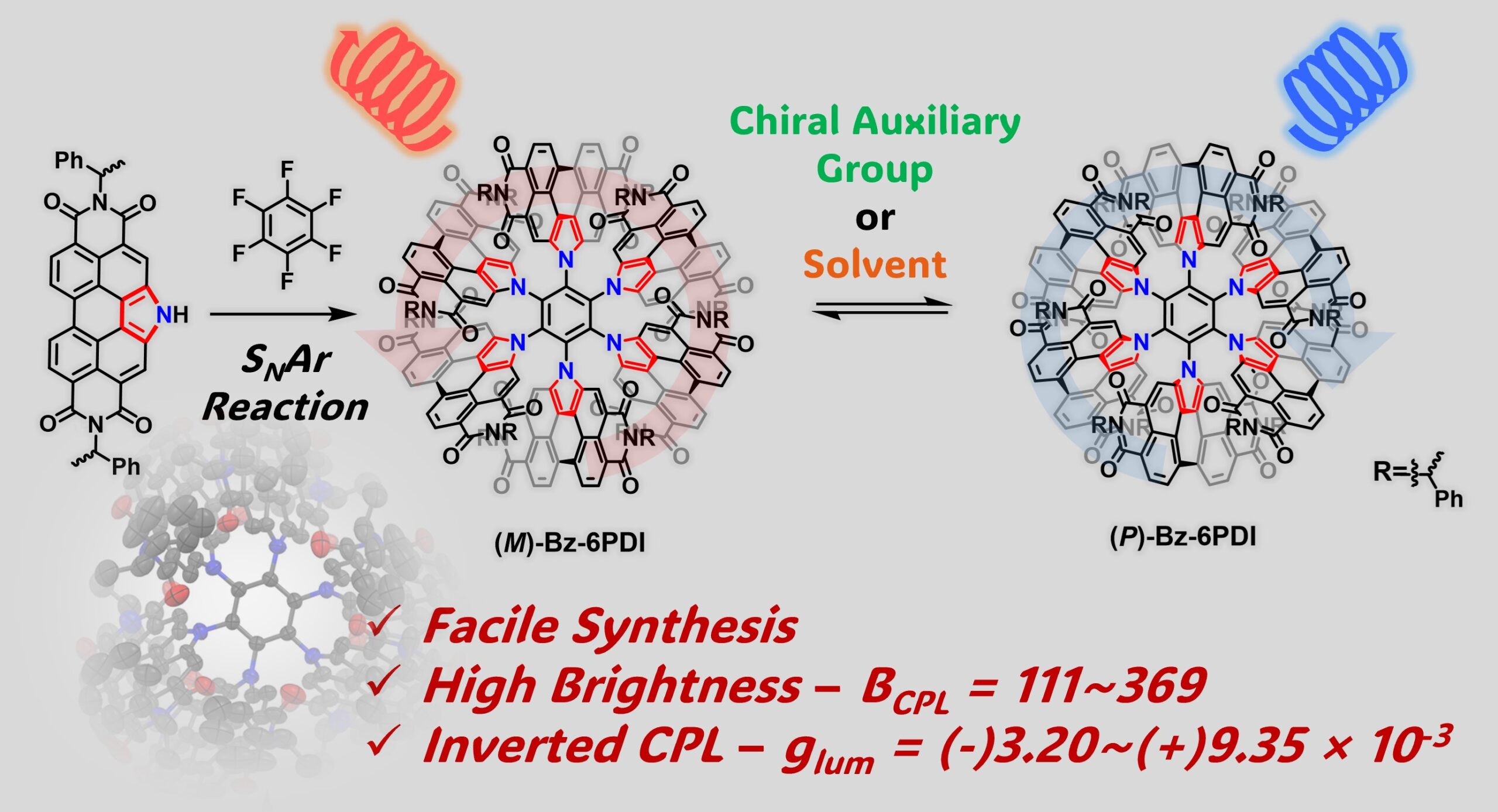Solvent-Induced Chirality Inversion in Propeller-Shaped Luminescent Molecules
Development of an emissive molecule that distinguishes between chloroform and dichloromethane through solvent-responsive chirality switching
The research group led by Ehime University have developed a luminescent propeller-shaped molecule that reverses its handedness depending on the solvent. The molecule, composed of six perylene diimide(PDI)units, exhibits bright circularly polarized luminescence whose sign switches between chloroform and dichloromethane. This solvent-induced chirality inversion, revealed through spectroscopy and theoretical studies, provides a new strategy for designing dynamic chiroptical materials and responsive molecular devices.
In recent years, molecular materials exhibiting circularly polarized luminescence(CPL)—light with a specific rotational direction(right- or left-handed)—have attracted considerable attention for applications in 3D displays, data storage, and quantum communication. Among them, molecules capable of switching their chirality in response to environmental changes such as solvent, light, or electric field are regarded as promising next-generation smart materials.
In this study, the collaborative research team led by Ehime University designed and synthesized a propeller-shaped molecule composed of six highly emissive perylene diimide(PDI)chromophores arranged like six blades. The molecule can be obtained in high yield through a one-step reaction from PDI derivatives bearing chiral auxiliaries, and it spontaneously adopts an optically active twisted conformation. Spectroscopic measurements revealed that this molecule exhibits bright CPL with BCPL values of 103–369 M-1 cm-1.
Furthermore, the team discovered that the propeller chirality of this molecule reverses depending on the solvent. The molecule adopts different helical conformations in chloroform(CHCl3) and dichloromethane(CH2Cl2), accompanied by a complete inversion in the CPL sign. Circular dichroism(CD)and CPL measurements, together with theoretical calculations, revealed that this inversion originates from the rotation of internal phenethyl groups, which interact differently with solvent molecules and thereby switch the overall helical direction of the molecule.
These findings demonstrate a novel approach to reversibly controlling molecular chirality and optical responses through subtle changes in solvent environment—distinct from conventional static chiral molecular designs. This study establishes a new design principle for dynamically modulating chirality via external stimuli, paving the way for future applications in optical switching materials, molecular sensors, polarization devices, and quantum photonic components.
Reference URL: https://onlinelibrary.wiley.com/doi/10.1002/anie.202509190
Bibliographic Information
Title:Solvent-Induced Chirality Inversion in Propeller-Shaped PDI Oligomers with Bright Circularly Polarized Luminescence
Authors:Yuma Tanioka(Ehime Univ.), Masayoshi Takase*(Ehime Univ.), Mashiro Hamasu(Ehime Univ.), Shogo Hata(Ehime Univ.), Kohei Hashimoto(Ehime Univ.), Shigeki Mori(Ehime Univ.), Yukihide Ishibashi(Ehime Univ.), Yuki Nukumi(Kyoto Univ.), Masahiro Higashi(Nagoya Univ.), Hirofumi Sato(Kyoto Univ.), Tetsuo Okujima(Ehime Univ.), Hidemitsu Uno*(Ehime Univ.)(*corresponding authors)
Journal:Angewandte Chemie International Edition 2025, 64, e202509190
DOI:10.1002/anie.202509190
Publication Date:May 28, 2025
Fundings
- JSPS KAKENHI(JP24K01470, JP23H03964, JP20H02725, JP23H04876, JP20H05839, JP23H04587, JP19K05422, JP25KJ1893)
- Nagase Science and Technology Foundation
- Takahashi Industrial and Economic Research Foundation
- Research Center for Computational Science(24-IMS-C018)
- Matsunaga Foundation
Media
-

Propeller-shaped PDI hexamers with solvent-induced twist inversion:A new class of chiral molecules exhibiting bright circularly polarized luminescence
The propeller-shaped perylene diimide(PDI)hexamers invert their helical twist(propeller chirality)depending on the solvent, leading to changes in both the sign and intensity of circularly polarized luminescence(CPL). Such solvent-controlled chirality offers a new design principle for developing responsive chiral materials.
credit : Wiley
Usage Restriction : Please get copyright permission
Contact Person
Name : Masayoshi Takase
Phone : +81-89-927-9610
E-mail : takase.masayoshi.ry@ehime-u.ac.jp
Affiliation : Graduate School of Science and Engineering, Ehime University
